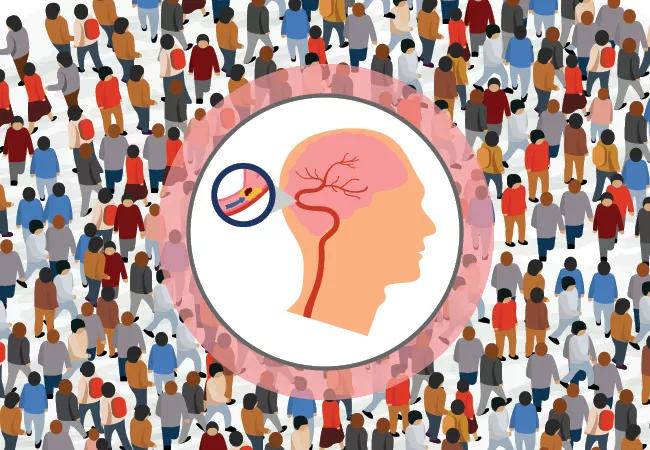Database studies find risks related to race, insurance type, geography

Thirty-day risk of readmission after ischemic stroke is significantly influenced by patients’ race and medical insurance but not by age, sex or household income, according to a large database analysis presented by Cleveland Clinic researchers at the 2020 International Stroke Conference this week.
Advertisement
Cleveland Clinic is a non-profit academic medical center. Advertising on our site helps support our mission. We do not endorse non-Cleveland Clinic products or services. Policy
A second nationwide database analysis reported at the conference by some of the same researchers finds that recent increases in the prevalence of risk factors for ischemic stroke are particularly pronounced among rural Americans compared with their urban counterparts.
“The observations from these analyses may help target interventions for stroke readmission reduction and stroke prevention efforts,” says Cleveland Clinic stroke neurologist Ken Uchino, MD, a co-investigator in both studies.
The first study examined data on patients hospitalized for acute ischemic stroke in Florida and New York from February 2012 to November 2013. The analysis drew on the State Inpatient Databases for these two large states and linked these data with U.S. census data on social determinants of health at the ZIP code level. The objective was to identify how various patient factors were associated with risk of hospital readmission within 30 days of discharge following ischemic stroke.
Multivariate logistic regression analysis was performed to assess associations after adjusting for patient demographics, socioeconomic characteristics, comorbidities, proxies for stroke severity and complications during initial hospitalization.
Among the 127,290 patients included in the analysis, the overall readmission rate at 30 days was 23%.
Multivariable analysis revealed that risk for readmission was significantly associated with the following:
Advertisement
In contrast, age, sex and household income (at the ZIP code level) had no significant effect on readmission risk in both unadjusted and multivariable analyses.
“Readmission after hospitalization for stroke is an important topic, as it represents a huge burden for all involved — patient, family, hospital and payer,” says the study’s principal investigator, Shumei Man, MD, PhD, who serves as Medical Director of the Thrombectomy-Capable Stroke Center at Cleveland Clinic Fairview Hospital. “These findings can guide refinements of how we devote resources to prevent readmission.”
The second analysis by the Cleveland Clinic group used data from the National Inpatient Sample, a nationally representative database of hospitals covering more than 97% of the U.S. population.
The researchers harvested comorbid risk factors for stroke among all patients hospitalized for ischemic stroke in the database from 2000 to 2016. They calculated crude and age- and sex-standardized prevalence estimates for each risk factor over early (2000-2008) and late (2009-2016) segments of the study period. Prevalence rates were compared between the two time segments and by patients’ geographic location, which was classified as either urban (metropolitan areas with ≥ 1 million population) or rural (all other locations). Regression models were used to assess risk factor trends according to time period, location and interactions between the two.
Among the key findings:
Advertisement
“These data show that there is a widening urban-rural divide in stroke risk factor prevalence,” notes the study’s senior author, Dr. Uchino, who serves as Head of Research and Education in Cleveland Clinic’s Cerebrovascular Center. “This geographic divide is a timely and relevant topic as we consider how to better address the social determinants of health in efforts to counter the overall rise in stroke risk factors across the U.S. population.”
Advertisement
Advertisement

Dopamine agonist performs in patients with early stage and advanced disease

Validated scale provides a method for understanding how lifestyle may protect against Alzheimer's

Promising preclinical research indicates functional motor recovery is durable

A principal investigator of the landmark longitudinal study shares interesting observations to date

Cleveland Clinic researchers collaborate with Microsoft to create a product ready for the field

Understanding TE involvement is a key to developing new treatments

Study aims to inform an enhanced approach to exercise as medicine

$3.2 million grant will fund use of calcium-based imaging to record neuronal activity in ischemia model